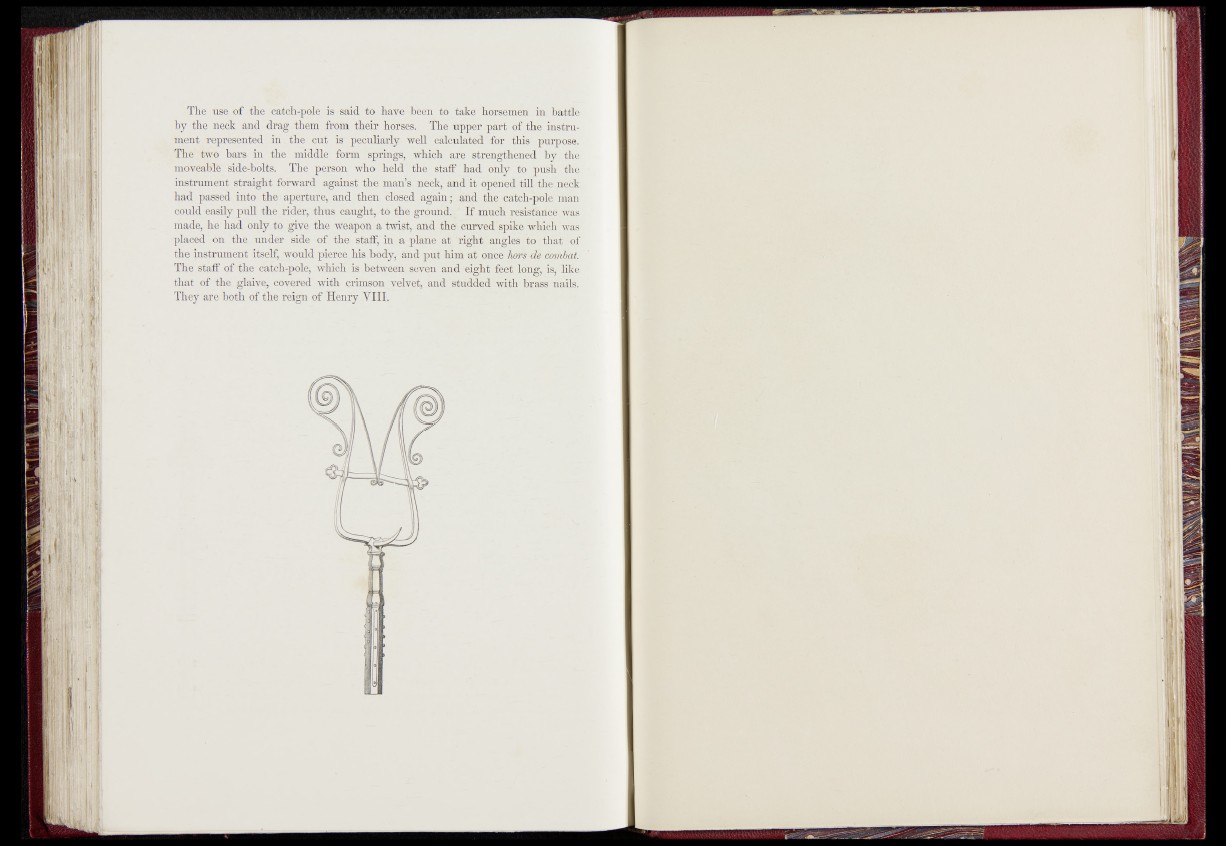
The use of . thé catch-pole is said to have '-bleu i to take horsemen in«, battle
by the neck and drag them from their horses. The upper part ofLthe .instrument
represented in,the cut iS"peculiarly^ well ,(^culat§dJ-for this purpose.
Thé^l#© bars in the middle springs, which are ‘ strengthened Tfjjthe
movëafelV side-bolts. The person who 'held^the staff had" oiily .to push the
instrument: straight forward against the man’s neck, and it opened,till thenfeck
hacT passed interfile -• aperture,, and.:fheh4 closed again; end Mg catch-pol’e'man
qpuld - easilyjnill^thejider, .thus caught, to the ground.." If .much resistance was
made,, he hadrbnly to -give the weapon a twistl and the' curved"spike which Vas
placed,on'.the:,.under side of the staff,'in a .plane at right angles tq^that of
the instrument itseff,.vrould pierce,his ,b.ódy1.and ptit him at once èqflïhai
The staff of- the-; catch7pole, .which is between seven and eight feet long, is, like
that of "the glaive, covered with crimson velvet, and studded with brass nails.
They are both of the reign of Henry VIII.